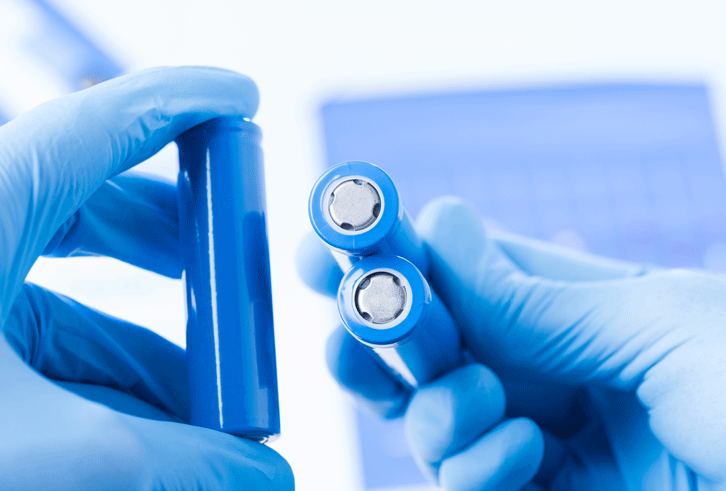Ethane-Ethylene Separation Using Zeolite Molecular Sieves

Introduction Separation processes are a critical component of the chemical industry. Olefin/Paraffin separations are one of the most industrially relevant separations for the production of plastics. Globally, 150 million metric tons of ethylene and 130 million metric tons of propylene are produced each year. Pressure swing adsorption, membrane separations, and cryogenic distillation are three methods […]
Characterizing Advanced Battery Anodes with Gas Adsorption BET Surface Area and DFT Surface Energy

Lithium-ion (Li-ion) batteries are an advanced technology that will play a key role in the energy transition to renewable and sustainable solutions. High energy-density, long cycle-life, and improvements in safety have driven their adoption. Applications in automotive, grid energy storage, and consumer electronics will continue to drive their growth in the coming years. The anode […]
Optimize Free-Space Correction for Low Surface Area Samples Using the Gemini Analyzer
The unique balanced measurement method used in the Gemini permits small amounts of surface area to be measured with nitrogen gas that otherwise would be measurable only with krypton. Low surface area samples often displace many times more nitrogen than they adsorb, especially if composed of low-density materials of large particle size. The standard, built-in, […]
Multicomponent Breakthrough Adsorption Water/Ethanol Competitive Adsorption on a Zeolite
Introduction Breakthrough adsorption offers many advantages over static adsorption measurements. Multicomponent breakthrough measurements are performed by flowing multiple gas or vapor streams. A mass spectrometer measures the outlet concentration of the breakthrough column. The data is then assessed to determine the adsorption and separation performance of a material. Multicomponent measurements can be analyzed using a […]
Enhance Powder Flow Understanding with Direct Measurements of Powder-Air Interactions
The ease with which air can flow through a powder bed reflects the strength of particle-particle interactions, and specifically highlights cohesive interparticle forces. Because air accounts for a large volume fraction of any bulk solid, specific characterization of powder-air interactions can lead to improved understanding of packing behavior in bulk solids and flow of bulk […]
Free Space Determination with Non-Helium Gases
Free space is conventionally measured using helium because it is nonadsorbing and does not condense at cryogenic temperatures. Helium is, however, relatively scarce on Earth and comes with a high price tag due to its limited availability and the costs associated with its extraction and purification. Despite its rarity, helium is widely used in scientific, […]
Transient Data Collection Using the 3Flex
Understanding the rate of mass transfer of a guest species on a nanoporous material is important to predict and simulate its performance in many fields including but not limited to catalysis, gas separation, and electrochemistry. This webinar will delve into what type of information can be collected from the 3Flex using the most updated transient […]
CO₂ Adsorption in Zeolite 13X

Introduction Breakthrough analysis is a powerful technique for determining the adsorption capacity of a material under flow conditions. Breakthrough analysis allows users to precisely control temperature, pressure, and gas flowrates. This allows users to mimic process conditions and analyze adsorbates under conditions similar to those found in a production plant. Zeolite 13X is a commercially […]
Predicting Multicomponent Adsorption From Single-gas Isotherms Using MicroActive Software with IAST
The study of multicomponent adsorption is critical to understand processes in conditions typically found in industrial environments. Nevertheless, single component analyses are most often performed due to the commercial availability of instruments for the collection of single component isotherms as well as the ease in operation. With the release of MicroActive v6.0, multicomponent adsorption isotherms […]
Characterizing Advanced Battery Anodes with Gas Adsorption BET Surface Area and DFT Surface Energy
Generally, a nitrogen isotherm is widely used to characterize a material for specific surface area and pore size distribution. Using this well-established gas adsorption method, graphite, a commonly used anode material for Lithium-Ion Batteries, was characterized. In this webinar, how the unique characteristics of a graphitic surface affect the appropriate BET range will be discussed as […]